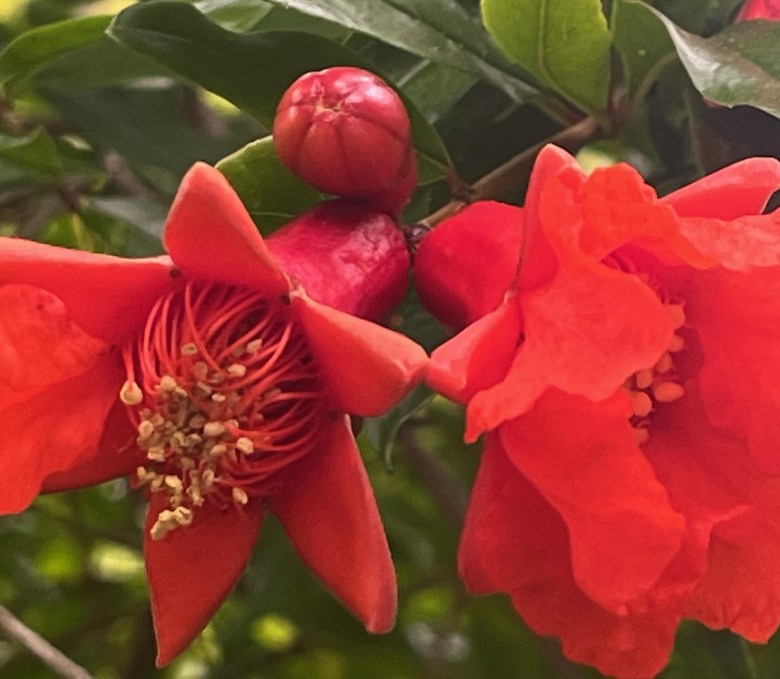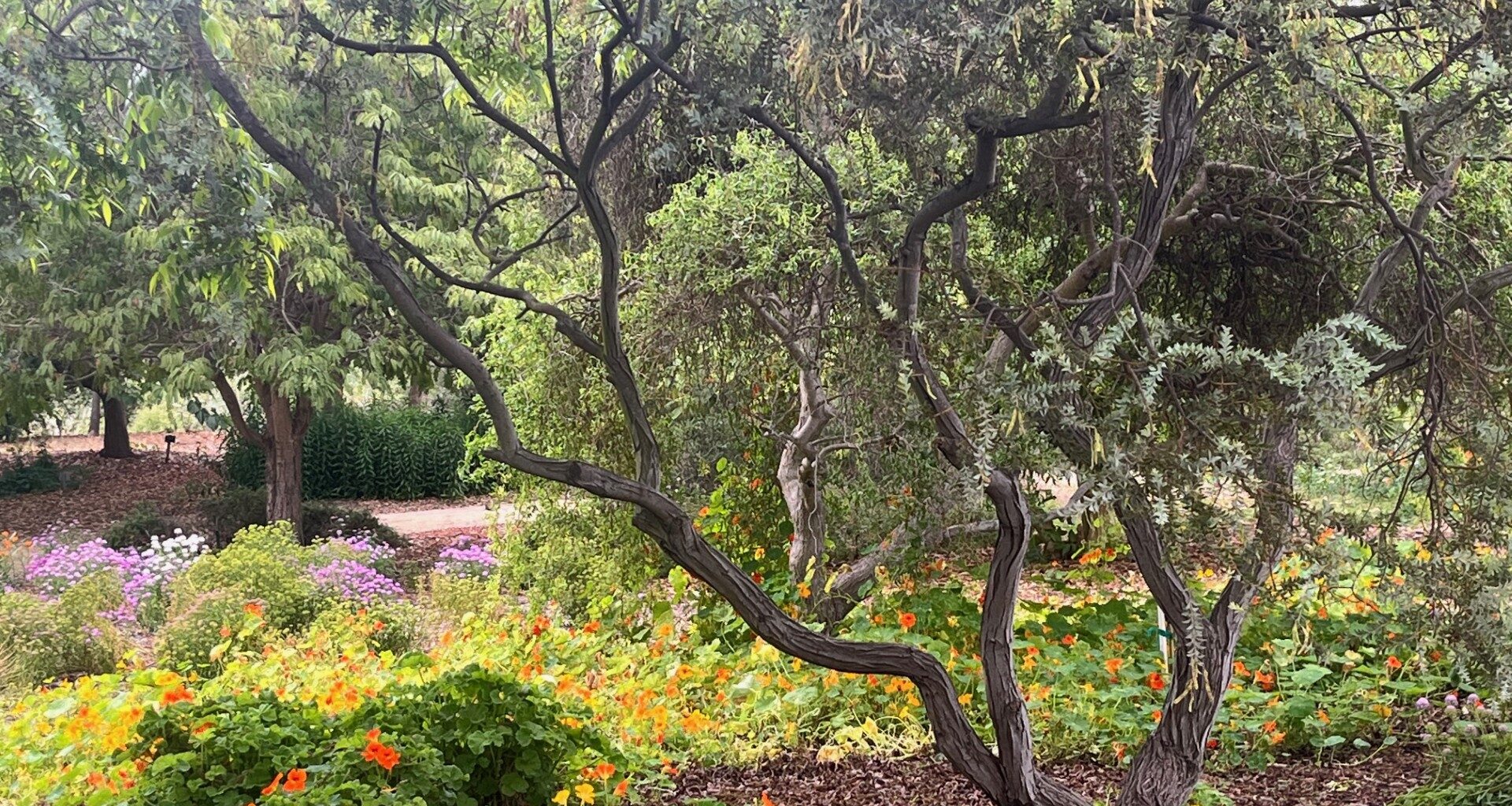Overview: Trees for Health Garden
Hundreds of plants, including a few of our native oaks, beckon you to get up, close and personal. Desert cottontail rabbits, ground squirrels and fox squirrels as well as many birds make their home here. The garden deserves many visits to its 4.5 acres.
The first time I discovered Trees for Health Garden in Balboa Park, I had been driving south on Balboa Drive near the corner of Quince Street.
I got out of the car, walked over, and began my adventure. I couldn’t believe how many times I had inadvertently passed up this hidden gem, which really isn’t so hidden.
A large sign, “Trees for Health,” sits at the top of the path.
From there, you’ll find trails meandering through the five different categories of trees. The trails represent the different flavors or characteristics of bitter, salty, sweet, sour, and pungent.
The trails have guides that explain how each flavor coincides with treating a specific health issue.
For example, on the “Bitter” Trail, you’ll discover that coffee bean is considered as astringent, helping to stimulate immune function, production of stomach acid and detoxification by the liver and colon.
Within the garden, you’ll also find ginkgo, cinnamon, mulberry and countless others that are native to many regions throughout the world, including San Diego.
You could easily spend an hour at this lush garden.
You’ll find yourself even staring up at the ancient and massive eucalyptus trees with huge hunks of shedding bark. The oil of eucalyptus has long been known for healing all kinds of respiratory ills.
Tea tree has its history
The tea tree, from which originates the popular oil, plays a role in history.
Captain James Cook, a British explorer, navigator, and cartographer who led three Pacific Ocean expeditions, found that the oil in the tea tree leaves made a good tea. He used it to help prevent scurvy in his crew. That is how the tree got its name; its other name is Narrow-leafed Paperbark.
I was also surprised to find a pomegranate tree in bloom, its bright red blooms drawing me in right away. The seeds contain oil used for moisturizing and beautifying. Inside the pomegranate’s fruit, a bounty of vitamins and minerals have several health-giving properties for skin, hair and nails.
Seeing the centerpiece of the garden
A spectacular angel’s trumpet tree could be considered the centerpiece of the garden. Its fragrance alone had me going in search of this tree with pale yellow flowers shaped like miniature trumpets, for which it is named.
 Plenty of plants are waiting to be seen on a visit to the Trees for Health Garden in Balboa Park.
Plenty of plants are waiting to be seen on a visit to the Trees for Health Garden in Balboa Park.
When I visited it in early June, the tree looked as though it belonged in a secret, magical garden. Its flowers draped all the way down the tree. Their fragrance is heady and strong.
When gazing into the upside-down trumpet flowers, I heard bees buzzing around, drunk with the thick fragrance and nectar. They burrowed themselves deep into the flower, gathering pollen from the pistils before flying off erratically in search of the next flower.
Hundreds of plants, including a few of our native oaks, beckon you to get up close and personal.
The garden deserves many visits to its 4.5 acres. On its trails, you’ll understand more fully the reason and season for every plant under the sun.
Desert cottontail rabbits, ground squirrels and fox squirrels as well as many birds make their home here.
This special spot in Balboa Park will help slow you down and catch your breath.
— Cynthia G. Robertson is an award-winning freelance writer and photographer. She has composed interesting stories about SoCal people and places for more than 30 years. Her stories, essays and poems have also been published in “Acorn Review,” a literary journal, as well as several anthologies, including “Six Feet Apart…in the Time of Corona.” She blogs about her observations of nature and spirituality, and in 2019, she penned her first novel, “Where You See Forever.” She is working on her next book. Find out more at cynthiarobertson.com.
